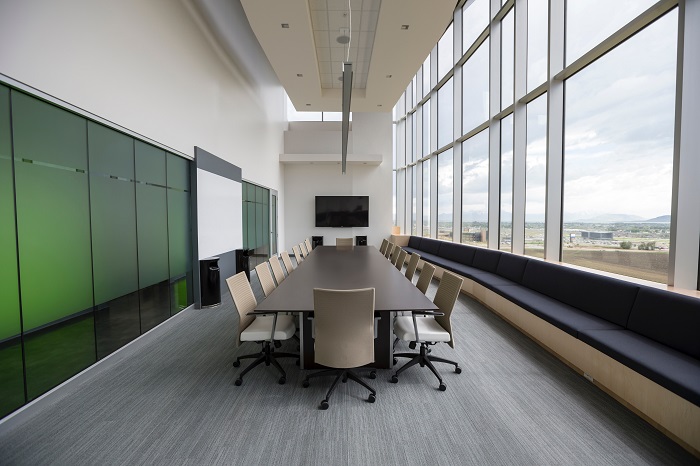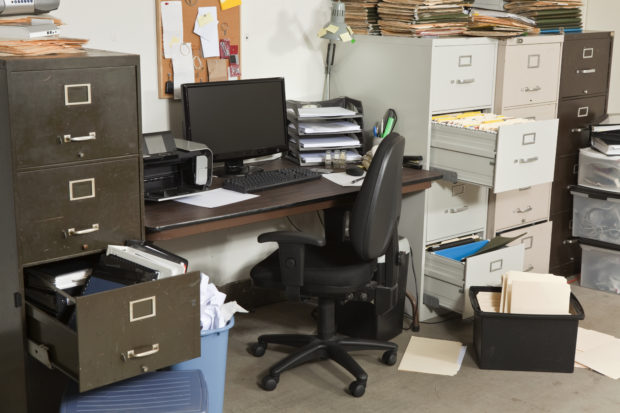This is Part II in a two-part series where we look at how commercial spaces must adapt and implement new policies to adhere to social distancing guidelines. We interviewed Matt Luttrell, Partner at ThYNK Design LLC for his input on this timely and important topic. In Part I we focused on the issue of square-feet per person requirements in buildings and how this will limit capacity. We also discussed how HVAC systems might be used to create fresh air and healthier work environments. Now, we’re going to shift our focus to other tools and tactics commercial spaces can use to keep the spread of COVID-19 down. Keep reading to find out what these are.
Omni: Aside from greatly adjusting the layout according to social distancing guidelines of commercial spaces, what other changes or precautions could be taken to adhere to revised distancing guidelines in a more efficient and effective manner?
ML: When possible, the ability to predict and schedule activities and users can be a great tool for optimizing the use of space. In K-12 educational environments, the circulation of students and faculty is highly planned and will become even more necessary to ensure that occupant use and density do not overwhelm resources and create unhealthy situations. Likewise, it appears that restaurants will need to enhance and promote reservation systems to manage seating and staff while using delivering and curb-side services for extended patron options. More movie theaters will use on-line reservations and pre-selection of seats. These commonplace practices can have long-term as well as short term benefits and will most likely become more prevalent in our daily experiences.
Omni: You talk about the importance of scheduling as a way for schools and businesses to manage capacity and social distancing. But what about when this is not an option?
ML: When scheduling or reservations are not an option, such as in retail or grocery store settings, human or automated occupancy counters are being used to limit the number of users at any given time. Employing staff to do this can be quite costly, and if we’re honest, not a desirable job. For automated options, there are many venders, such as Sensource, that provide hardware and software that can easily be set up and adapted to an organization or business’s specific needs.
Omni: Beyond limiting capacity in a space, what other precautions can businesses take?
ML: Thermal scanning of customers or guests determines if individuals have an elevated body temperature so that buildings can prevent a person showing symptoms from entering. This is another effective mechanism for controlling the spread of virus. There are readily available systems for small businesses that range from a $100 handheld scanner for checking individual temperatures to group and line screening systems for approximately $5,000. TEquipment.net provides an array of options for consideration.
Additionally, masks seem to be one of the more accessible and more effective tools for moving forward. While they are not 100% effective, it appears that they may significantly reduce transmission via air, which seems to be the primary source. No one seems to want to quantify how effective masks are, but based on common sense, the practice appears warranted. Given the ease, minimal costs, and purported effectiveness, masks seem to be the most readily available option for reopening our society without inundating our current resources.
No system is fail-proof, but simplicity and redundancy are always good principles when evaluating options.
Omni: In your opinion, can common areas like waiting rooms, break rooms, or lobbies realistically adhere to new CDC social distancing guidelines?
ML: These spaces are pinch points within every building. While they are designed to accommodate the building’s occupancy load, they are not intended to minimize interactions; they are generally shared spaces designed for efficiency and ease of use. Accordingly, each type of space has its challenges and should be evaluated for options, but these spaces are inherent barriers without actively implementing changes to a buildings configuration and/or user actions.
Reconfiguration can be a costly endeavor, especially if it is a short-term solution. Repurposing spaces may be a solution that allows for relief. Several areas traditionally found in a building, such as conference rooms and breakrooms, can be repurposed to address immediate needs. Breakrooms may be better utilized as an office or workspace for a limited number of employees, while employees are required to eat at their desks. Conference rooms could also become workspaces, or often, these rooms are located close to or adjoin lobbies/ waiting rooms and can become an extension of the room. These are potential short-term solutions and should involve an evaluation of HVAC, lighting, power, egress, and other potential code implications.
Omni Realty Group thanks Matt Luttrell for sharing this valuable insight to help us to better understand the challenges many business owners face when it comes to renovating and recreating commercial real estate space to accommodate social distancing and sanitization both now, and for what many feel will be long into the future. If you missed Part I of this two-part series, be sure to check it out here.
Do you own or work in a commercial space – office, retail, or industrial? What do you see being the biggest challenge related to COVID-19 required changes? Join in the conversation by leaving a comment below.





